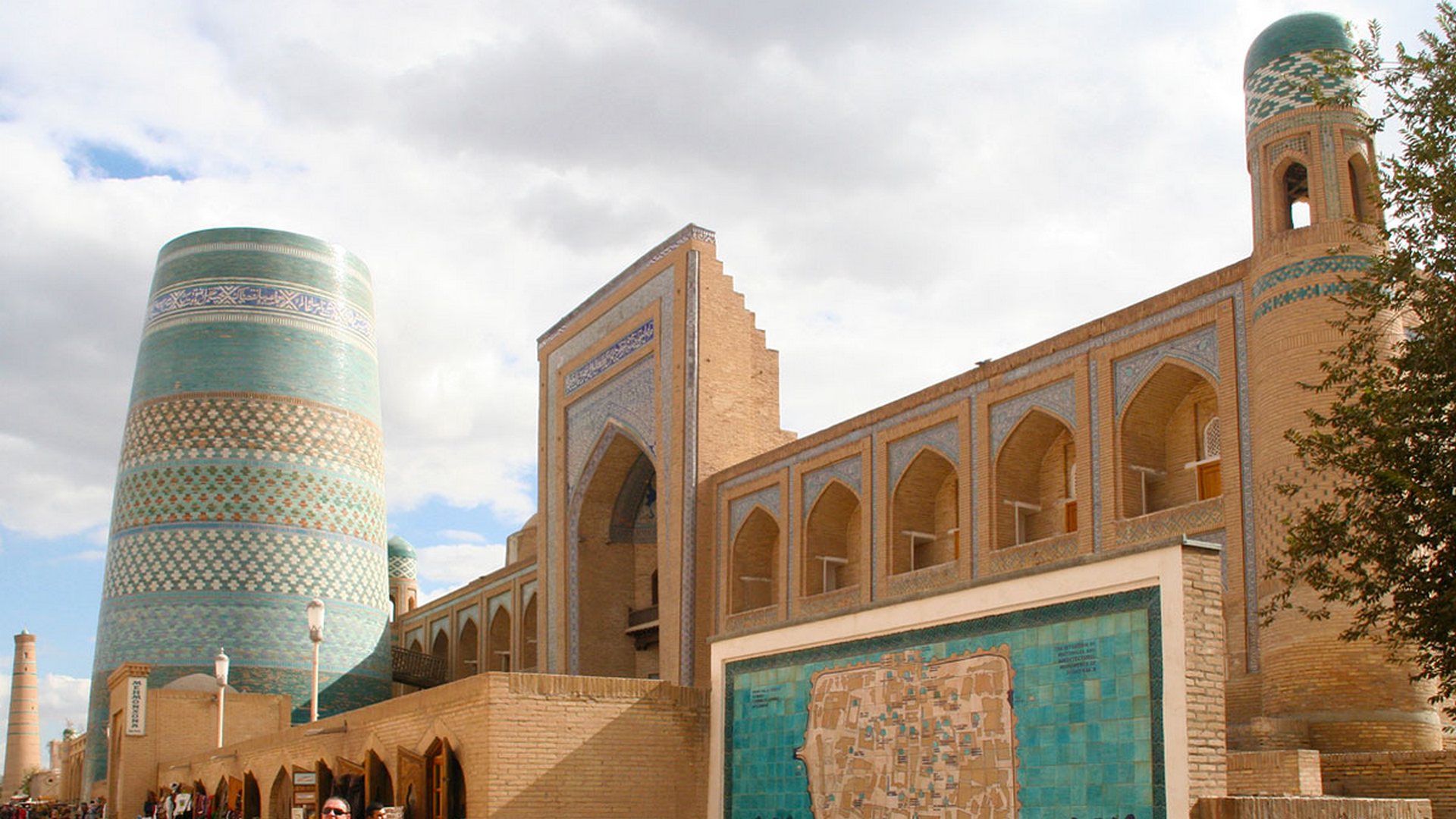Description
Property Name: Muhammad Amin Khan Madrasa
Inventory No: 998-6237-4
Date of infill of the inventory form: 2009-08-10
Country (State party): Uzbekistan
Province: Khorezm
Town: Khiva
Geographic coordinates: 41° 22′ 40.85″ N
60° 21′ 26.7″ E
Historic Period: 19th century, 2nd half
Year of Construction: 1851-1855
Style: Inaqid
Original Use: Madrasa
Current Use: Hotel
Architect: Unknown
Significance
Muhammad Amin Khan Madrasa, one of the largest madrasas ever built in the Islamic world, is constructed on the opposite of Kunya Ark (Old Castle). It is a huge structure with an unfinished minaret in its foreground. Muhammad Amin (1845-1855), who was a dignitary Khan was ruling the country when the building was constructed. The Madrasa was erected between 1851-52. Its unfinished 26 meters high minaret reached its present height in 1855. The minaret is called Kalta-Minar (short minaret). After Khiva is declared in World Heritage site by UNESCO in 1990, the monument has restored, and now it’s used as a hotel.
Selection Criteria
iii. to bear a unique or at least exceptional testimony to a cultural tradition or to a civilization which is living or which has disappeared
iv. to be an outstanding example of a type of building, architectural or technological ensemble or landscape which illustrates (a) significant stage(s) in human history
v. to be an outstanding example of a traditional human settlement, land-use, or sea-use which is representative of a culture (or cultures), or human interaction with the environment especially when it has become vulnerable under the impact of irreversible change
State of Preservation
Due to the tourist attraction of Khiva and the huge size of the monument, Muhammad Amin Khan Madrasa undertakes a charge. After the declaration of Khiva in the World Heritage site by UNESCO in 1990, the monument has restored, and now it’s used as a hotel, tourist information, ticket office, and cafe. Therefore its current usage is threatened by some reasons: many installations such as telephones, water lines, sewage, and electrical systems, wire radios, and air-conditioning were installed. Besides, due to aging deterioration problems visibly occur in the monument.
References
Prochazka, Amjad Bohumil, KHAWARIZM, An unknown civilization between the caspian and the aral sea, Saudi Arabia, 1990
Gombos, Karoly; Gink, Karoly. The pearls of Uzbekistan, Bukhara, Samarkand, Khiva, Corvina Press, Budapest, 1976
Kalter, Johannes; Pavaloi, Margareta. Uzbekistan: Heirs to the Silk Road, 2003
Mankovskaya, L.. A Museum in the Open. A Reserve of Khorezm Architecture, Tashkent, 1982.
Naumkin, Vitaly V.. Khiva, Caught in time: Great photograpgic archives, Lebanon, 1993.


